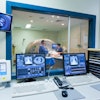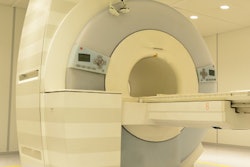Abbreviated breast MRI is not only effective for screening among high-risk women but also useful for evaluating "pure" ductal carcinoma in situ (DCIS), according to two presentations delivered on 2 March at ECR 2024.
The shortened protocol offers patients a safe alternative to longer breast MRI screening exams – and streamlines radiology department workflow, said first presenter Dr. Tamara Suaris of St. Bartholomew's Hospital in London.
"Abbreviated breast MRI can be considered as a safe alternative to conventional MRI studies [for] very high-risk screening, reducing MR waiting times and backlog," she noted.
Abbreviated breast MRI offers a cost-effective way to use the modality without compromising diagnostic accuracy, Suaris explained. She and colleagues assessed the performance of this type of protocol in women at high risk for breast cancer via a study that included 236 shortened breast MRI exams performed between 2018 and 2021. The exam consisted of six sequences -- precontrast T1W, T2W axial, two dynamic postcontrast, subtracted axial sequences, and MIP reconstruction -- compared with a conventional protocol of 19 sequences. Four readers blinded to patients' prior imaging, history, and disease outcomes reviewed the scans.
Out of the 236 studies, four invasive cancers and one BI-RADS 3 lesion were identified. The team found that the abbreviated protocol performed well in negative predictive value (NPV) and sensitivity:
| Performance of abbreviated MRI protocol for high-risk breast cancer screening compared with full protocol | ||
|---|---|---|
| Measure | Full protocol | Abbreviated protocol |
| Negative predictive value | 100% | 100% |
| Positive predictive value | 13.8% | 8.9% |
| Sensitivity | 100% | 100% |
| Specificity | 94.7% | 91.2% |
The team also found the following:
- The average time to read the abbreviated protocol MRI exams was 69 seconds.
- Interreader agreement between the abbreviated and full protocol was 91.5%.
- The short protocol's recall rate was higher compared with the full protocol, at 9.5% versus 6.1%.
Suaris and colleagues conceded that abbreviated breast MRI had lower PPV and sensitivity compared with a full protocol exam, but they emphasized that it is a workable option for high-risk breast cancer screening.
"Abbreviated MRI is feasible in screening MRI of high-risk patients, with sensitivity/cancer detection rates comparable to the full MRI protocol, but with a small increase in the recall rates," they concluded.
In another presentation delivered during the same session, Dr. Nurbanu Basdogan of Istanbul University in Turkey shared results from a study that found that a shortened MRI protocol can detect pure DCIS (that is, DCIS without any invasive features) with high sensitivity. Their research included 25 pure DCIS cases diagnosed by biopsy and identified on breast MRI between May 2021 and October 2023; the abbreviated protocol consisted of T1-weighted imaging (T1WI) without contrast, T1WI with first-minute contrast, and a one-minute subtraction image. Two radiologists reviewed the cases.
The short protocol showed 80% specificity for identifying pure DCIS, according to Basdogan.
"[We found that] pure DCIS could be detected with the high sensitivity abbreviated MRI protocol," she concluded.
For more coverage from ECR 2024, please visit our RADCast.



















